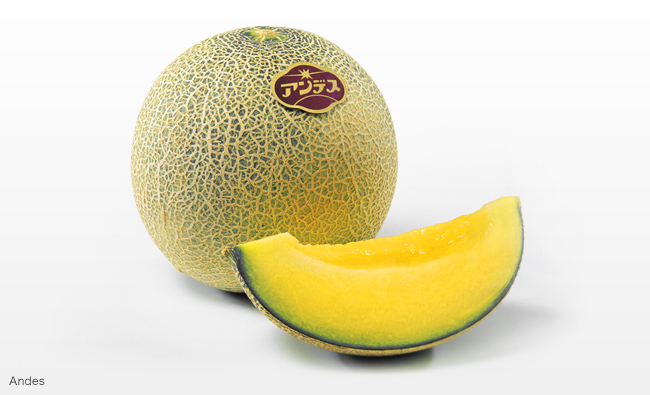- Top>
- Episode 07 Melon

Episode 07 Melon
Melons for everyone
Melons have a characteristic sweet aroma and texture that melts in your mouth. The net melon (so named because of its peel pattern), which used to be synonymous with luxury products, has become delightfully and affordable. Sakata varieties have been instrumental in this shift.
It is considered that the Cucurbitacea Cucumis melon (Cucumis melo L.)hails from the West African country of Guinea along the banks of the River Niger. It is said that the Makuwa (oriental melon) came to Japan during the Yayoi period (3rd century BC to 3rd century) via China. The history of the melon in Japan goes back a surprisingly long time.
As early as 1931, the Makuwa along with ten or more varieties of the musk melon was published in the spring edition of our catalog "Sono no Izumi" (The Garden Fountain). The name "musk melon" is the general name for melons with unique, strong aromas. At the time, a lot of attention was paid to the cultivation of musk melon, netted melon varieties in glass houses but they were not for daily consumption. In Japan, the melon consumed popularly then was the Makuwa, which was not very sweet and had a relatively weak aroma.

Makuwa

Sono no Izumi
What revolutionized this situation was the announcement of the development of the "Prince" variety in 1962. This variety was the product of a lot of trial and error in the crossing between the "New Melon" Makuwa and the Charentais cantaloupe type, brought from Europe by the company founder and melon enthusiast Takeo Sakata. For cultivation of the Prince variety in warm and humid Japan, open culture and plastic tunnel culture were possible, and compared with the Makuwa, which was commonly cultivated through open culture at the time, its aroma and sweetness were unprecedented. As a result, it immediately became a hit.
At this time, Sakata provided thorough cultivation guidance on site as well as market promotion. This was groundbreaking at the time, it formed the basis for growing district-based guidance and was to be the cornerstone of the business generally. In this way, the Prince variety contributed significantly to open culture melon development. However, as before, netted melons produced in glass houses were unrivaled.

Prince

Andes
In 1977, fifteen years after the announcement of the Prince variety, a superbly tasty netted melon that was easy to cultivate in plastic houses and tunnels was announced. At that time, there was some variation in the sweetness of the melon, and this was the root of some concerns.
This variety was called Andes, the product of taking the "shin" (core) out of the word "anshin" (safe) in the motto "Anshin desu" (It's safe). Since the announcement of its development, almost 35 years have passed and the Andes netted melon still has a large share of the market. It played the leading role in making luxury netted melons available to everyone.
After that, Sakata's determination did not waver, and the company came out with the Earl's Knight series among others.

Earl's Knight

Korotan

Korotan as a green curtain
(cultivator shade)
In 2011, another ground-breaking melon by the name of "Korotan" was developed by Sakata. The Korotan, whether cultivated in the garden or a container culture on the balcony, yielded tasty netted melons, to the surprise and pleasure of horticulture enthusiasts.
Right up to the 100th anniversary of Sakata in 2013, the Korotan, considered the ultimate "melon for everyone," has an important presence in vegetable gardens as a green curtain (cultivator shade).
What will the next Melon for everyone be? We too are filled with anticipation!




